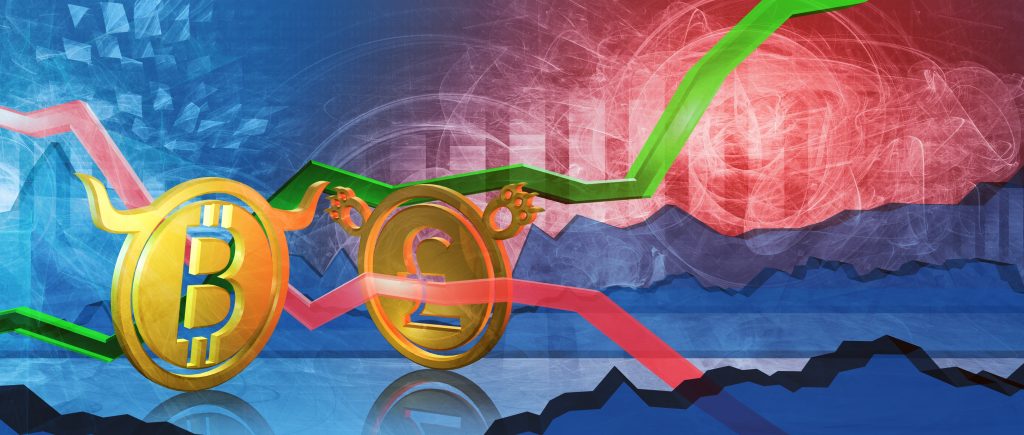The financial markets have been wildly volatile this week, with notable swings in the price of gold, Bitcoin, and the British pound (GBP) caused by a variety of circumstances. Let’s examine the main forces at work in their performance and look forward.
Dynamic Interplay
The complex interplay among economic data, expectations for central bank policy, and overall market sentiment is underscored by this week’s market fluctuations. This dynamic interaction is demonstrated by the rise in gold, the echo of Bitcoin, and the tenacity of the GBP. As we proceed, navigating these constantly shifting markets will require keeping up with impending data releases, world events, and central bank announcements.
Gold: Inflation Surprise Fuels Rally
Gold prices rejected a bearish head-and-shoulders chart pattern by forcefully breaking above a significant resistance level, adding momentum to the move. A change in sentiment is indicated by this technical breakout, and the Relative Strength Index (RSI) also suggests that bullishness may persist.
Inflation Surprise: The US Consumer Price Index (CPI) statistics for June was a game changer. Gold prices surged in response to a surprising decrease in inflation, which fell below 0% month over month for the first time since early 2023. Since the Fed’s main goal is to manage inflation, these data strengthened the case for a probable rate drop later this year.
Geopolitical Factors: While not a dominant factor this week, geopolitical tensions can significantly influence gold prices. Any escalation in global conflicts could see investors flock to gold as a safe-haven asset.
Bitcoin: Riding the Wave of Easing Policy
Bitcoin mirrored gold’s price movement this week, with both assets benefiting from the dovish shift in Fed expectations. Jerome Powell’s comments hinting at a potential rate cut, coupled with the weaker-than-expected inflation data, created a risk-on environment that supported Bitcoin’s price.
Correlation with the Stock Market: The increasing positive correlation between the S&P 500 index and Bitcoin is an intriguing dynamic to take into account. This implies that the general sentiment of the market is affecting the price movements of Bitcoin, which is perceived as a mainstream asset class. This correlation is not perfect, though, and price swings in Bitcoin can still occur independently of changes in the stock market due to its intrinsic volatility.
GBP Benefits As Dollar on the Defensive Front: The US dollar experienced a decline this week, which in turn, contributed to the GBP’s strength. This weakness in the dollar can be attributed to the aforementioned dovish Fed expectations. Divergence in Central Bank Policy: A key factor driving GBP’s appreciation is the market’s belief that the Bank of England (BoE) will be more hesitant to cut interest rates compared to the European Central Bank (ECB). This divergence in central bank policy stances can lead to relative valuation changes between currencies.
Uncertainty:
While not a major news item this week, it’s crucial to acknowledge that lingering uncertainty surrounding the UK’s post-Brexit trade deals can still impact the GBP. Any positive developments on this front could further bolster the Sterling.
Looking Ahead: Data as the Key Drivers
The coming week will be data-driven, with crucial economic data points in the US set to be released, including the Producer Price Index (PPI) and the University of Michigan Consumer Sentiment Survey. These data sets can significantly impact the trajectory of gold and Bitcoin prices.
PPI and Inflation Expectations: The PPI measures inflation at the wholesale level and can provide insights into future consumer inflation trends. A lower-than-expected PPI reading could further strengthen the case for a Fed rate cut, potentially pushing gold prices higher.
Consumer Sentiment and Risk Appetite: The Consumer Sentiment Survey gauges consumer confidence and spending habits. A positive reading could bolster risk appetite across markets, potentially leading to further gains for Bitcoin. However, a negative reading could dampen investor sentiment and lead to a pullback in both gold and Bitcoin prices.
GBP’s Path Hinges on Data, Global Events
The GBP’s future performance will depend on the upcoming data releases, global risk sentiment, and any developments related to Brexit.
As with gold and Bitcoin, the PPI and Consumer Sentiment data will influence the GBP’s valuation. A strong data showing in the US could reignite concerns about the Fed maintaining a tighter policy stance, potentially weakening the GBP against the dollar. Any major global events impacting risk appetite can also affect the GBP. An escalation in geopolitical tensions could drive investors towards safe-haven currencies like the US dollar, putting downward pressure on the GBP.
Further Insight
With political challenges, stretched public finances, stagnating wages, and poorer productivity than other major countries, the UK economy is experiencing its worst performance since World War II. The economic strategy of the new Labour government, known as Bidenomics, is to increase public investments while luring in private capital. The plan calls for increasing employment, modernizing the National Health Service, creating better housing and infrastructure, and investing in renewable energy and infrastructure.
A recent drop in inflation and relative political stability in comparison to other major countries are potential positives. The Labour government’s proposals might have a big effect on the GBP if they are successful. Good things like higher investment, higher productivity, and a more robust labour market would all help to strengthen the Pound. On the other hand, failures or a poor pace of development can cause the GBP to continue to weaken.
 Noor Trends News, Technical Analysis, Educational Tools and Recommendations
Noor Trends News, Technical Analysis, Educational Tools and Recommendations





